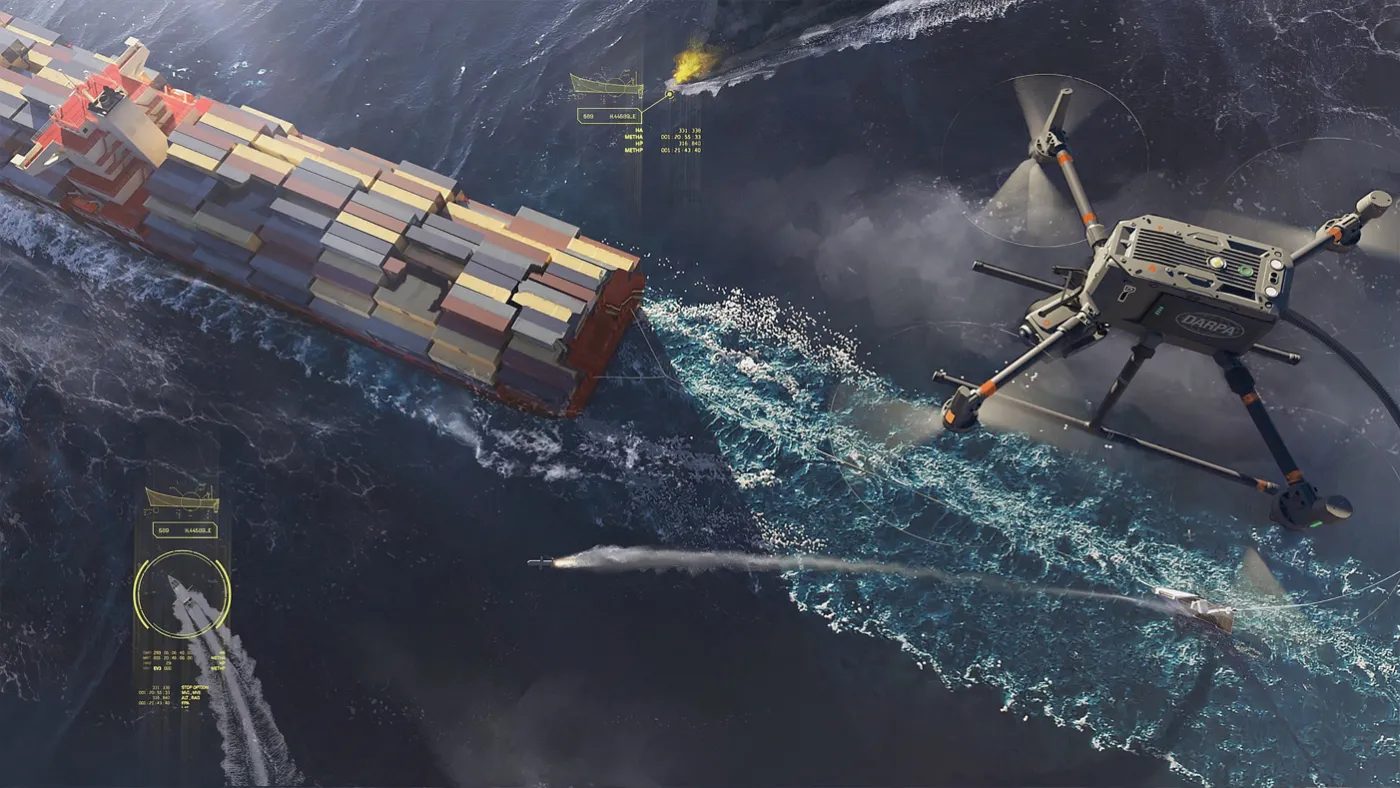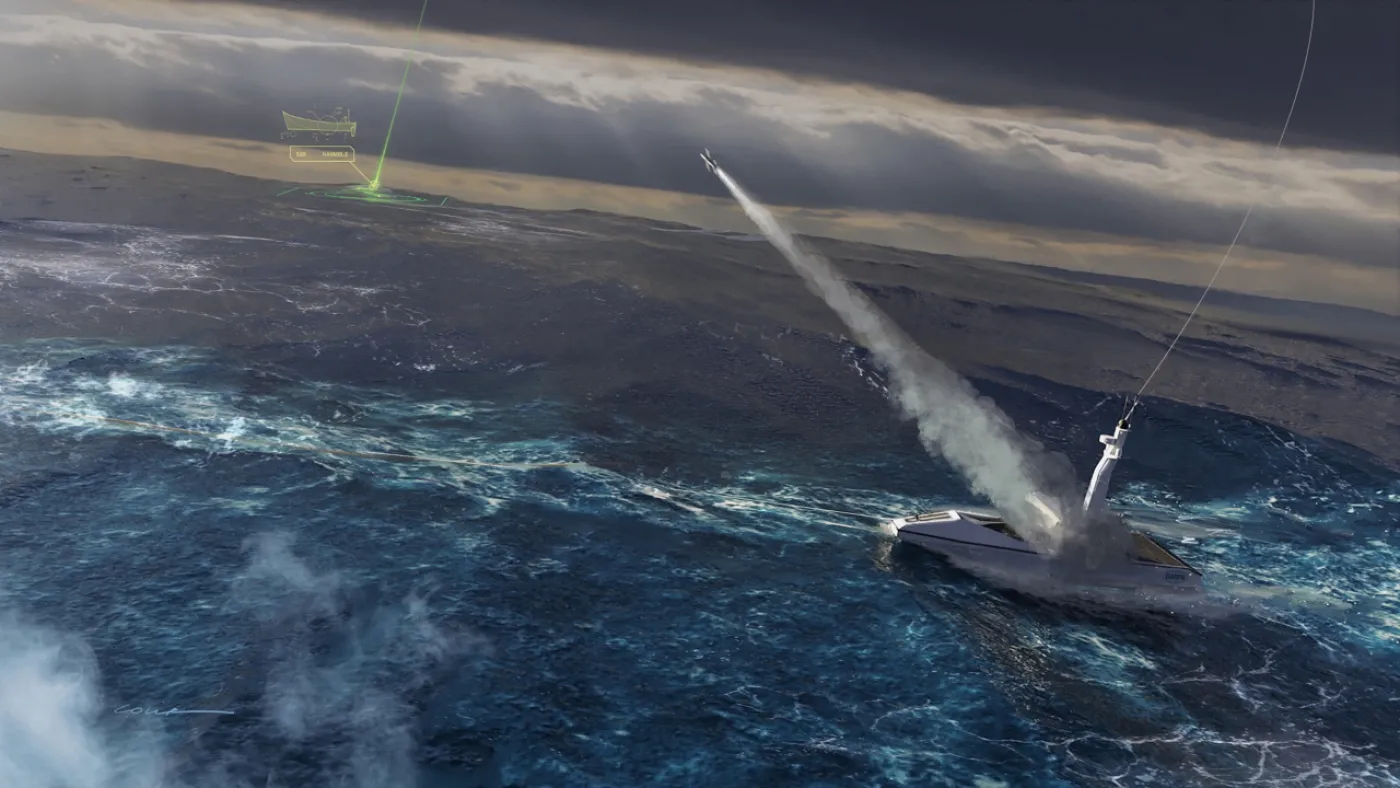Summary

The objective of the Pulling Guard program is the development and demonstration of a semi-autonomous platform that enhances survivability of unarmed logistics vessels from potential threats, primarily uncrewed surface vehicles (USVs).
Although solutions shall retain a remote supervisor in the loop who retains authority for engagement decisions, the Pulling Guard system requires sufficient autonomy to allow for supervision of multiple systems over a secure connection.
The focus of the Pulling Guard program is the integration and marinization of existing sensors and effectors on a vehicle with an emphasis on modularity in both software and hardware. The program focus on modularity is based on the desire for an ongoing, rapid development cycle that evolves as new threats emerge and expands the total addressable market with tailored variants that address the statutory or regulatory compliance items necessary for export variants.
The Pulling Guard program is notionally planned for two (2) phases, with the initial BAA covering the Development Phase (18 months).
A second BAA will cover a second phase with a reduced number of performers (from the first phase) focused on Integration, Manufacturing, and Commercial Transition (21 months).
The Development Phase may include two focus areas (FA) with multiple performers for (FA1) platform development and multiple performers for (FA2) sensor/kill chain development. This program structure may require cross-performer engagement on the development and agreement on interfaces (physical and digital) and an iterative design cycle approach to mature systems from concept to delivery.
The Pulling Guard program has a dedicated focus on resilient software that starts secure and builds capability. DARPA’s preferred method to achieve this goal is the use of formal methods, which is an umbrella term for a range of mathematically rigorous techniques for producing software and machine-checkable evidence of software performance. For more information on Formal Method, please refer to the Best Practices Guide posted on to SAM.gov.
Integration, Manufacture, and Commercial Transition (Phase 2) may include a mix of Phase 1 performers with focus on final design, manufacture of initial variants, demonstration events, and execution of commercial strategy.
Office
Tactical Technology OfficeOpportunity
HR001125S0003
Solicitation

